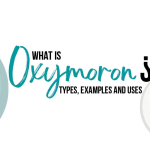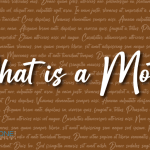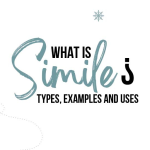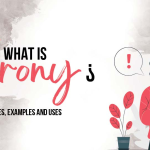“If it’s all been dream and delirium
may death ripen me in my dream.”
― Gabriela Mistral, Madwomen: Poems of Gabriela Mistral
One of the most beautiful and perfect examples of Alliteration. The word alliteration derives from the Latin word littera, meaning “letter of the alphabet”. Alliteration is a literary device in which the same sound, usually a consonant, is repeated at the beginning of many words in a phrase or sentence.
This sound repetition generates a musical and memorable impact that grabs the reader’s attention and emphasises the words that are repeated.
Read: What is Irony? Types, Definition, Uses & Examples of Irony.
Alliteration is used in Old English, Old Norse, Old High German, and Old Irish alliterative verse. It was an essential component of the Sanskrit Shlokas.
Alliteration, often known as start rhyme or head rhyme, is a common literary element in our everyday lives. Poets, advertisers, and headline writers all use the strategy of repeating initial letter sounds to get people’s attention. It also adds attention, harmony, and rhythm to poetry.
What is Alliteration?
Alliteration is defined in literature as the prominent repetition of identical starting consonant sounds in subsequent or closely related syllables within a group of words, even if they are spelled differently.
Some literary scholars consider vowel sound repetition or repetition at the end of words alliteration.
Alliteration is frequently employed in prose to bring the reader’s attention to a certain passage and make it stand out. Alliteration is also widely utilised in character naming to give them more memorable names that are enjoyable to hear aloud.
Read: Here’s a list of 10 Most Popular Romance Books of all time. “That you must read”
While the function of alliteration is similar in both poetry and prose, poets frequently utilise it to build a poem’s rhythm and for its aural aspects.
How is Alliteration used in Prose?
Alliteration can be used to focus the reader’s attention to and emphasise specific words or ideas. In the phrase “The sun was beaming brightly on the beautiful beach,” for example, the repetition of the “b” sound emphasises the terms “beach” and “brightly.”
By repeating the same tone throughout the sentence, it can be used to produce a unified and harmonic text. This repetition contributes to the writing’s impression of coherence and flow.
Read: List of 10 Best Libraries in Kolkata for Bookworms that you must visit.
By producing a melodious and catchy impact, alliteration can help make language more memorable and engaging. This is especially beneficial in advertising slogans, where alliteration is frequently utilised to generate a distinctive phrase that the reader remembers.
Alliteration can also be utilised to inject humour into a sentence. By repeating a funny or absurd sound, such as “f” or “p,” you might generate a lighter and comical tone in your work.
Some examples of Alliteration to make you understand the concept a bit better –
- “It was a dark and stormy night; the rain fell in torrents, except at occasional intervals, when it was checked by a violent gust of wind which swept up the streets (for it is in London that our scene lies)” – Paul Clifford by Edward Bulwer-Lytton
- In this excerpt above, the alliteration can be found in the repetition of the “t” sound in the following words: “dark and stormy night,” “rain fell in torrents,” “violent gust of wind,” and “swept up the streets.” the repetition of the “t” sound creates a sense of harshness and intensity, which helps to set the mood for a dark and stormy night. It also helps to draw the reader’s attention to certain words and phrases, making them stand out and adding emphasis.
- “Call me Ishmael. Some years ago–never mind how long precisely–having little or no money in my purse, and nothing particular to interest me on shore, I thought I would sail about a little and see the watery part of the world” – Moby-Dick by Herman Melville
- In this excerpt above, The recurrence of the “s” sound at the beginning of several words, such as “some,” “years,” “small,” “no,” “purse,” “shore,” “sail,” and “see,” results in alliteration.
The use of alliteration in this paragraph adds rhythm and flow to the writing, making it more memorable to the reader. It also aids in drawing the reader’s attention to specific words and phrases, such as “some years ago,” “little or no money,” and “nothing particularly to interest me,” which can aid in establishing the context and the character’s motivations.
- In this excerpt above, The recurrence of the “s” sound at the beginning of several words, such as “some,” “years,” “small,” “no,” “purse,” “shore,” “sail,” and “see,” results in alliteration.
You may also like: Too Good To Be True a Book By Prajakata Koli
How is Alliteration used in Poetry?
The primary reason for using alliteration in poetry is that it sounds good. It’s a technique for capturing the attention of readers or listeners. It’s also an obvious way to indicate that the alliterative words are thematically related, and it draws attention to the subject matter.
The second function of alliteration in poetry is to create mood. While a vast range of words might theoretically be employed to describe any subject, some letter sounds have distinct implications amplified by repetition. Consider the “s” sounds in the words “solace,” “serene,” and “silence.”
It nearly makes things sound whispered, and depending on the context, it might generate an impression of mystery, solemnity, or closeness. In fact, there is a term for the repeating of this type of letter sound; it is called sibilance, and it also applies to consonants beginning with “ship,” “zip,” “chasm,” “genre,” and “jealous.” The opposite is true for harsh consonant sounds like “ck” in “cat” or “g” in “good”.
Read: List of Top 10 Best Free Book Reading Apps for Bookworms
You may also like: Mistborn Series in Order: Start to Finish
The additional names for alliteration—an initial rhyme or head rhyme—allude to the third reason for using it. Alliteration, like perfect rhyme, adds melody and rhythm to poetry and gives it a feeling of how it should sound when read aloud.
Because perfect rhyme is not widely used in contemporary poetry, alliteration and its brothers, assonance, and consonance, are useful tools to have in your toolbox.
Some examples of Alliteration to make you understand the concept a bit better –
Had we but world enough, and time,
This coyness, lady, were no crime.
We would sit down, and think which way
To walk, and pass our long love’s day.
In this small excerpt from the poem To His Coy Mistress by Andrew Marvell, the emotion is subtlety expressed through alliteration where the letters ‘w’, ‘c’, and ‘l’ have been used in a rhythmic form.
Closed my lids, and kept them close,
And the balls like pulses beat;
For the sky and the sea, and the sea and the sky
Lay like a load on my weary eye,
And the dead were at my feet
In this small excerpt from the poem The Raven by Edgar Allan Poe, you can see that the sound ‘ck’ is there in closed, kept, and close; which shows that alliteration is purely based on sound and not the letter sometimes. This poem has some beautiful examples of alliteration all over.
Alliteration is a lyrical element that has made its way into everyday life. It can be found in news headlines, TV show titles, commercial slogans, and company names. Coca-Cola, Dunkin’ Donuts, Krispy Kreme, Too Hot To Handle and Weight Watchers are just a few examples of catchy alliteration. Alliteration makes the names and titles catchy and helps the listener and reader retain and remember the name a lot faster and for a long time.
Read: How to write a story plot? Tips, Tricks, & Types of Story Plots.
The fact that alliteration is a key component of these word games should serve as a warning to authors to employ alliteration sparingly. A few appropriate repetitions will improve your vocabulary, but too many will result in a tongue twister.
Before I end this journey of alliteration, here are some exceptional examples of books that are famous for its alliterative content –
- Chicka Chicka Boom Boom by Bill Martin Jr. and John Archambault
- The Second Story (The Magic Misfits #2) by Neil Patrick Harris
- Sense and Sensibility by Jane Austen
- The Famous Five by Enid Blyton
- Gone Girl by Gillian Flynn
- The Great Gatsby by F. Scott Fitzgerald
- Love’s Labor’s Lost by William Shakespeare
Finally, alliteration is a literary device in which the same sound is repeated at the beginning of many words in a phrase or sentence. It is used to emphasise points, set a tone or atmosphere, and make the material more memorable and intriguing to the reader.
Alliteration can be found in a wide range of literature, including poetry, prose, and song lyrics, and it can help writers add depth and significance to their work.
Publish your book for free with BlueRoseONE and become a bestselling author. Don’t let your dream of becoming an author fade away, grab the opportunity now and publish your book – be it fiction, non fiction, poetry or more.
Now a quick quiz for you… find out three alliterated lines in the blog.
Happy Reading!
You may also like: What is Plot Stucture? Definition with Examples
















